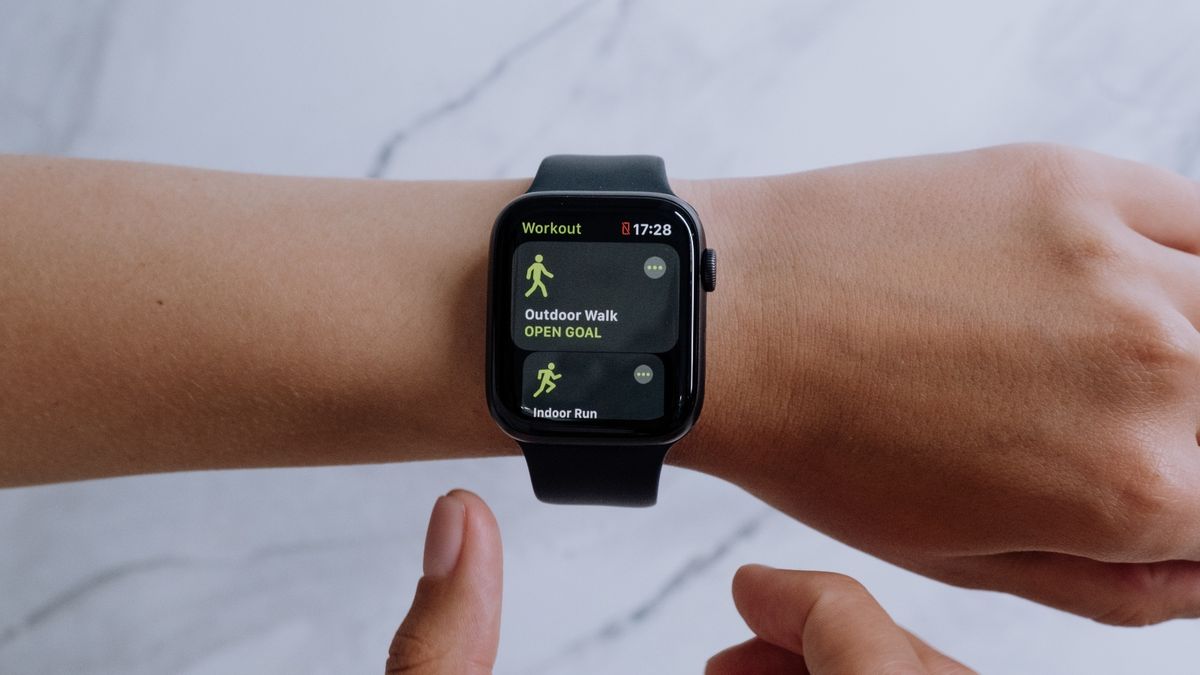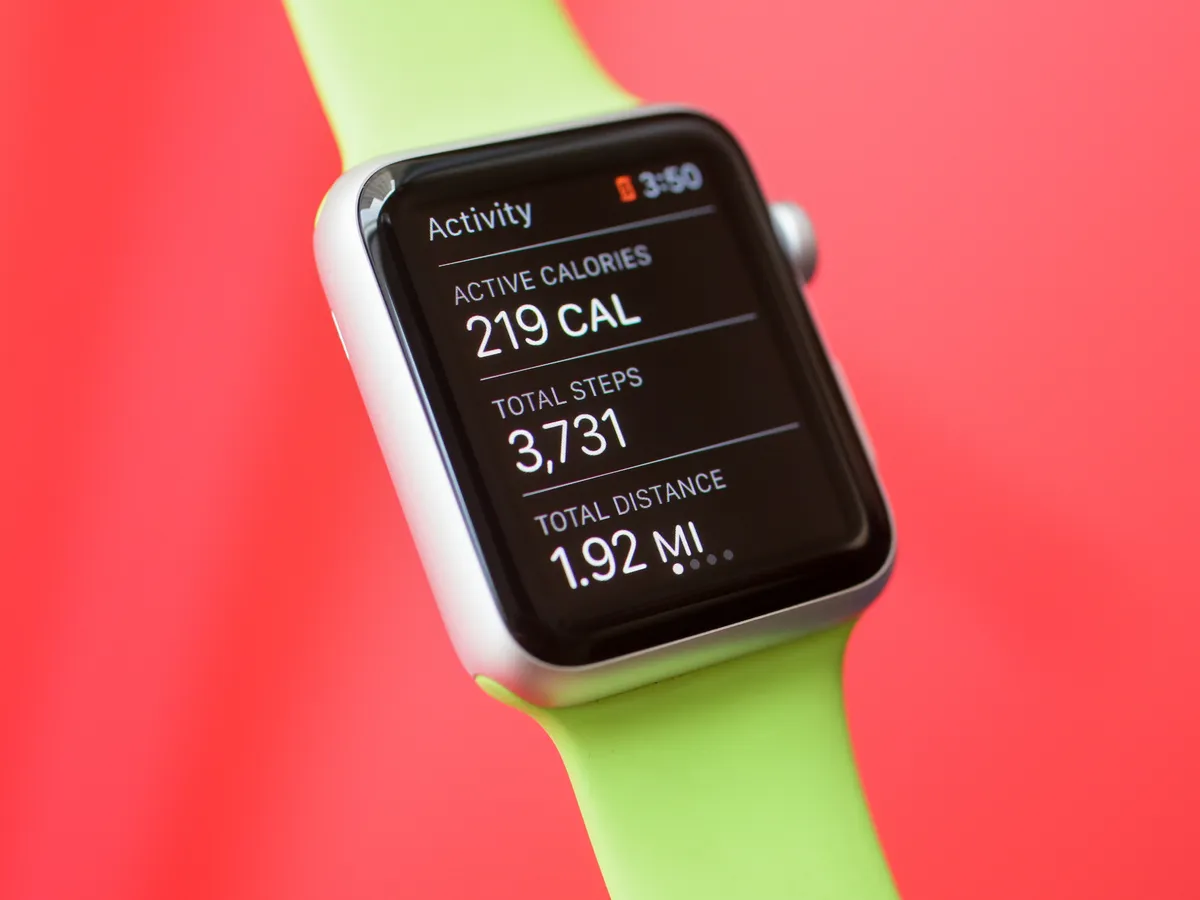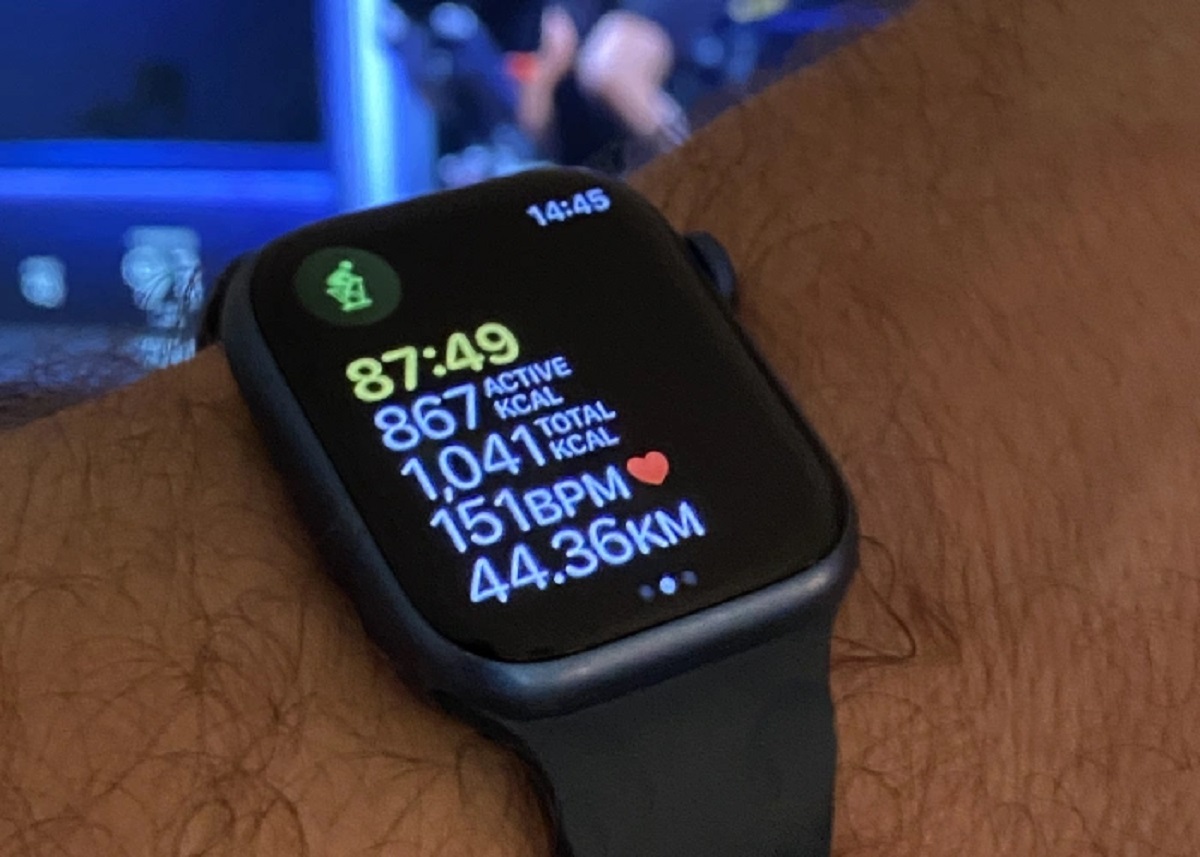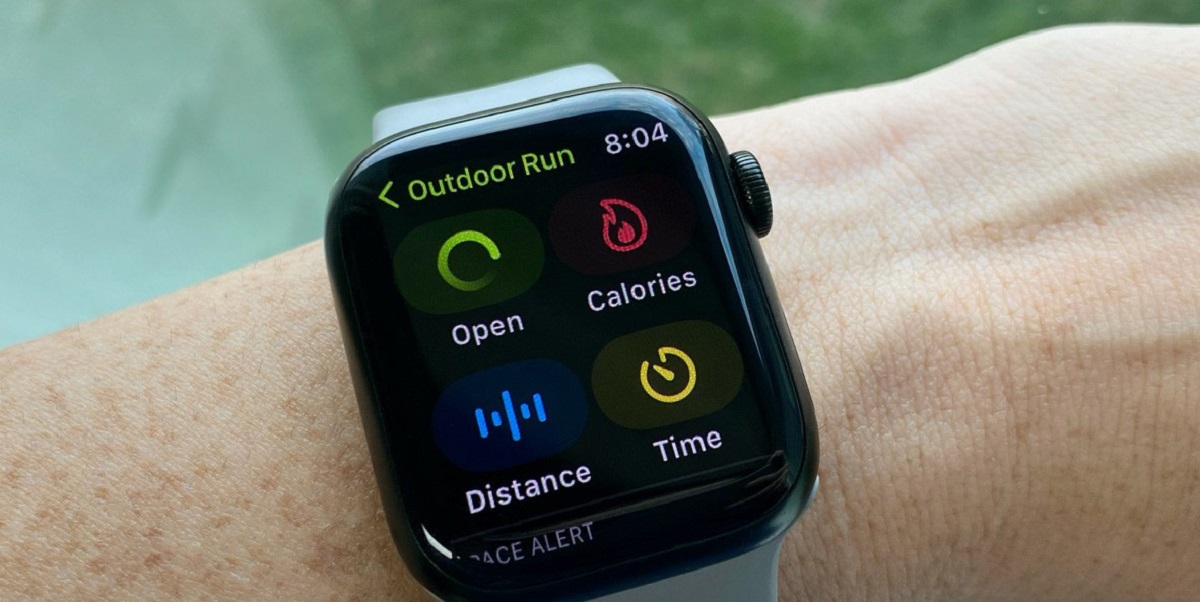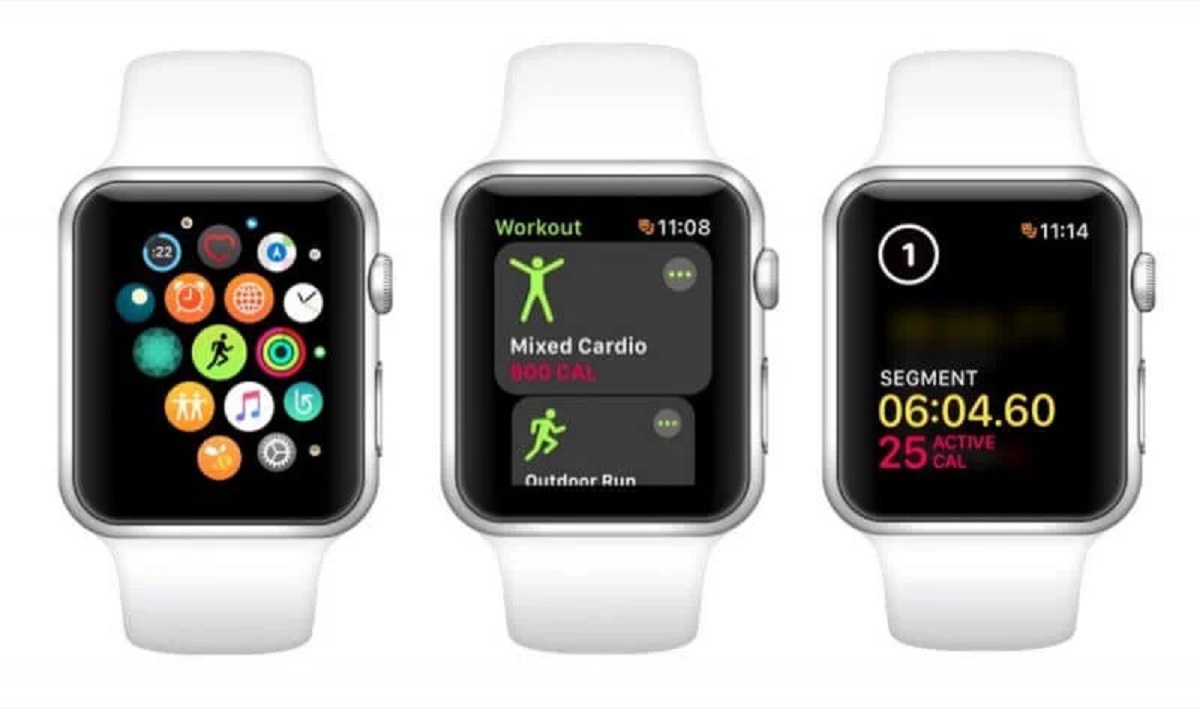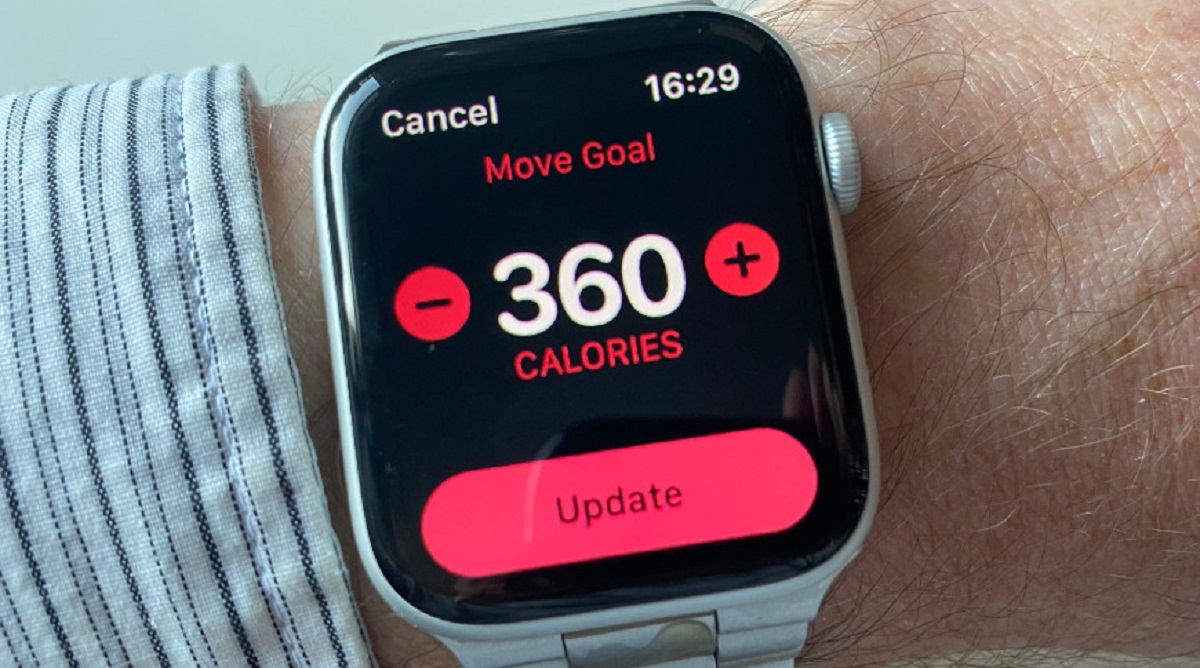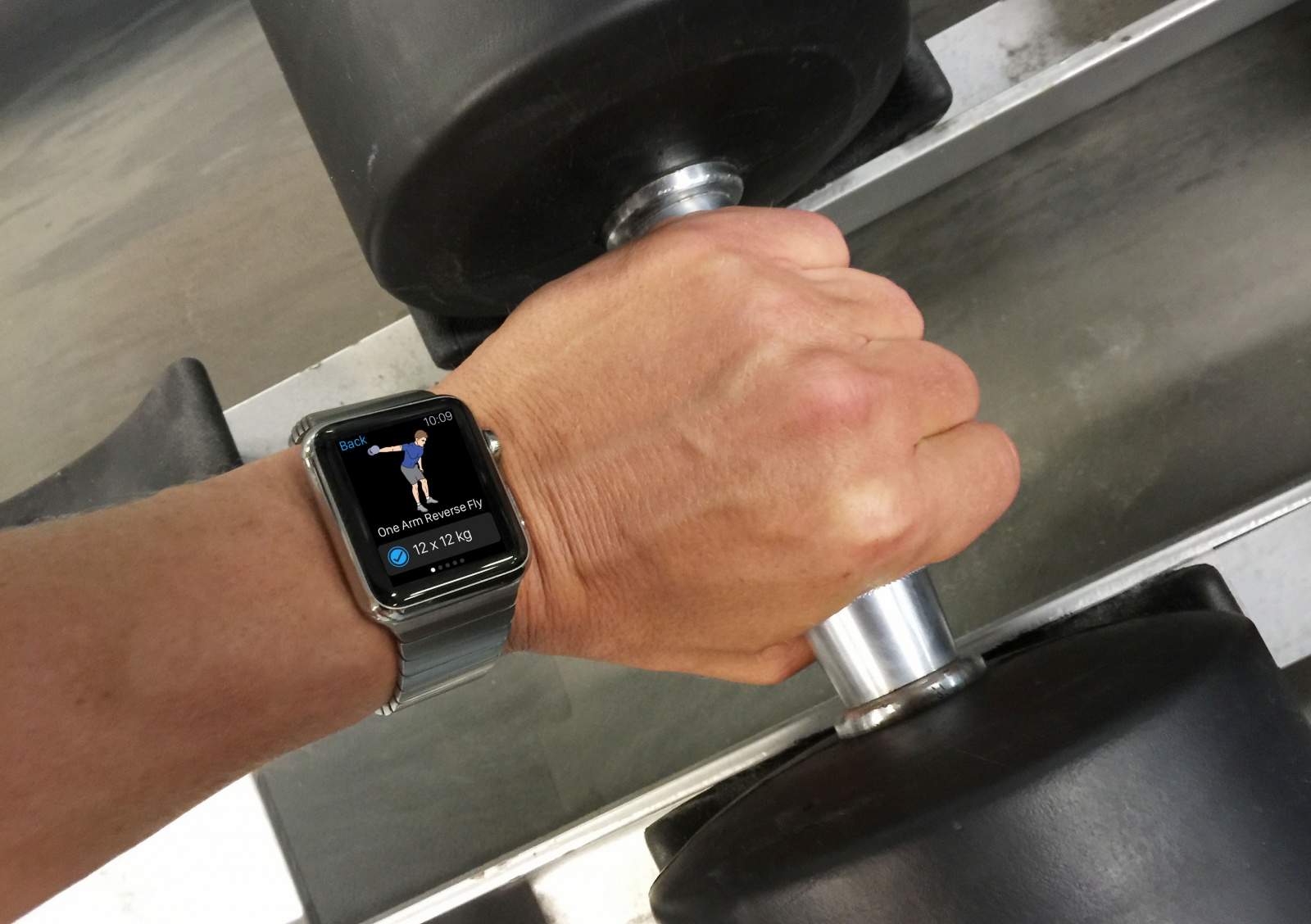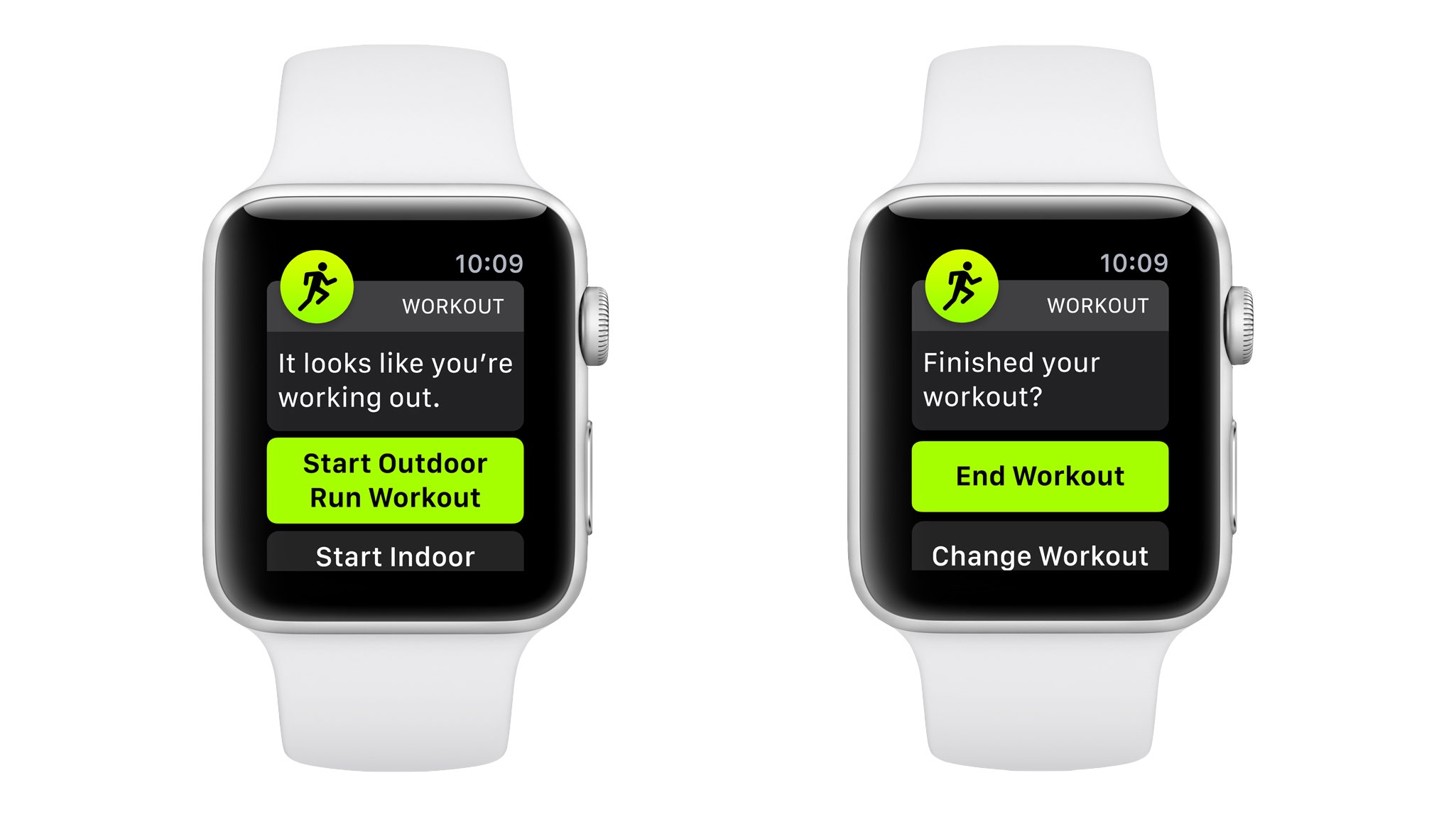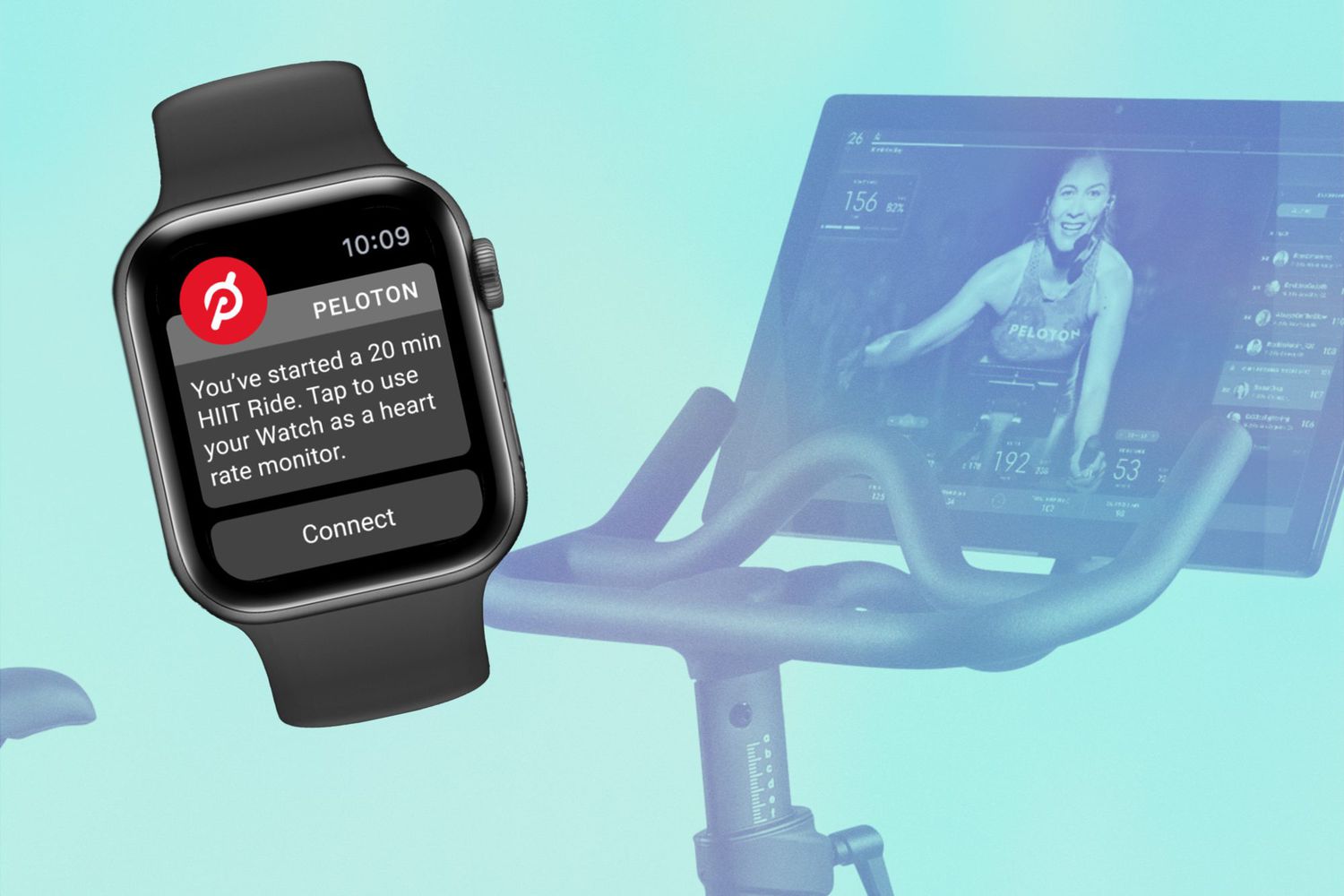Introduction
Welcome to a comprehensive guide on how accurate the Apple Watch is at tracking calories burned. With its advanced technology and built-in sensors, the Apple Watch provides users with valuable insights into their daily physical activity. Knowing the accuracy of calorie tracking can help you make informed decisions about your fitness and weight management goals.
For many Apple Watch users, understanding how the device calculates and measures calories burned is crucial to accurately monitor their progress. In this article, we will delve into the science behind Apple Watch’s calorie tracking and explore various factors that can affect its accuracy.
The Apple Watch uses a combination of heart rate monitoring, motion sensors, and algorithms to estimate the number of calories burned during physical activity. However, it’s important to note that no calorie tracking device, including the Apple Watch, can provide completely precise measurements. There are inherent limitations to any wearable device’s ability to accurately calculate calories burned.
Throughout this guide, we will examine the various factors that can impact the accuracy of Apple Watch’s calorie tracking, such as individual differences, environmental conditions, and activity type. We will also offer tips on how to improve the accuracy of your Apple Watch’s calorie readings.
Furthermore, we will compare the Apple Watch’s calorie tracking accuracy to other popular fitness trackers and discuss the pros and cons of each device. By the end of this article, you will have a better understanding of the Apple Watch’s capabilities and how it stacks up against its competitors in terms of accurately tracking calories burned.
So, whether you’re looking to lose weight, improve your fitness level, or simply monitor your daily activity, this guide will provide you with essential knowledge to make the most out of your Apple Watch’s calorie tracking feature. Let’s dive in and explore the fascinating world of Apple Watch calories!
Understanding Apple Watch Calories
Before we delve into the accuracy of Apple Watch calorie tracking, it’s essential to have a clear understanding of how the device calculates and measures calories burned. The Apple Watch utilizes a combination of sensors and algorithms to provide users with estimated calorie expenditure during physical activity.
One of the primary methods used by the Apple Watch to measure calories burned is through heart rate monitoring. The device uses green LED lights on the back of the watch that detect blood flow and measure heart rate. By analyzing heart rate data along with other factors such as age, weight, height, and gender, the Apple Watch estimates the number of calories burned based on the intensity and duration of the activity.
In addition to heart rate monitoring, the Apple Watch also relies on its motion sensors, including an accelerometer and gyroscope. These sensors detect movements and rotations, allowing the device to track activities such as walking, running, cycling, and even swimming. By combining the data from these sensors with the heart rate information, the Apple Watch calculates the energy expenditure for various activities.
It’s important to note that the Apple Watch’s calorie tracking is not limited to active workouts alone. The device also considers your basal metabolic rate (BMR), which is the amount of energy your body needs when at rest. By factoring in your BMR and incorporating data from various sensors, the Apple Watch provides a more comprehensive view of your daily calorie burn.
It’s worth mentioning that the accuracy of Apple Watch’s calorie tracking may vary depending on factors like individual differences, activity type, and even environmental conditions. The device uses general algorithms to estimate calories burned, which may not be perfectly tailored to every individual’s metabolism.
While the Apple Watch aims to provide users with a reliable estimate of calorie expenditure, it is important to interpret the data as an approximation rather than an absolute value. It serves as a useful tool for tracking trends and making comparisons, allowing you to monitor your progress and make informed decisions about your fitness and wellness goals.
In the following sections, we will explore the various factors that can affect the accuracy of Apple Watch calorie tracking, as well as tips to improve its precision during different activities. So, let’s continue our journey into demystifying Apple Watch calories!
How Does Apple Watch Calculate Calories Burned?
Understanding how the Apple Watch calculates calories burned is key to evaluating its accuracy in tracking your physical activity. The device utilizes a combination of sensor data, algorithms, and user profile information to estimate energy expenditure during workouts and daily activities.
Heart rate monitoring plays a significant role in the Apple Watch’s calorie calculation process. The device measures your heart rate using green LED lights and photodiodes on the back of the watch. By detecting the pulse of blood flow through the wrist, the Apple Watch gathers data to determine your heart rate.
The device then uses your heart rate data in conjunction with other factors such as age, weight, height, and gender to calculate the number of calories burned. The algorithms take into account the relationship between heart rate and energy expenditure during physical exertion to estimate the calories burned during a specific activity.
In addition to heart rate monitoring, the Apple Watch’s motion sensors, including an accelerometer and gyroscope, play a crucial role in calorie calculation. These sensors detect movements and rotations, allowing the device to identify when you are active and engaged in physical activities.
The Apple Watch categorizes different activities into predefined workout types, such as running, walking, cycling, or swimming. Each workout type has a specific algorithm that analyzes the combination of heart rate data and motion sensor information to provide a more accurate estimation of energy expenditure.
It’s important to note that the Apple Watch also takes into account your basal metabolic rate (BMR) when calculating calories burned. BMR refers to the amount of energy your body needs to maintain basic bodily functions at rest. By incorporating your BMR along with the data gathered from heart rate monitoring and motion sensors, the Apple Watch provides a more comprehensive understanding of your overall calorie expenditure.
Furthermore, the Apple Watch considers the intensity and duration of your activities when calculating calories burned. Higher-intensity workouts tend to burn more calories than low-intensity activities. Similarly, longer durations of activity result in higher overall energy expenditure.
While the Apple Watch employs sophisticated technology and algorithms to estimate calories burned, it’s important to remember that these calculations are still estimations. Factors such as individual differences in metabolism, variations in heart rate response, and other physiological factors can influence the accuracy of the calorie readings.
In the next sections, we will explore the various factors that can impact the accuracy of Apple Watch calorie tracking and provide tips to improve the precision of the device during different activities. So, let’s continue our exploration of Apple Watch calories!
Factors That Affect Accuracy
While the Apple Watch provides estimates of calories burned during physical activity, several factors can influence the accuracy of these readings. It’s important to understand these factors to interpret your calorie data more effectively and make informed decisions about your fitness and wellness goals.
1. Individual Differences: Every person’s physiology is unique, and factors such as body composition, metabolism, and heart rate response can vary among individuals. The Apple Watch relies on general algorithms based on population averages, which may not perfectly align with your specific characteristics. These individual differences can affect the accuracy of the calorie readings.
2. Activity Type: Different activities require varying levels of effort and exertion. The Apple Watch uses specific algorithms for each predefined workout type to estimate calories burned. However, these algorithms may not perfectly capture the energy expenditure of all activities, especially those not included in the predefined workout types.
3. Input Accuracy: To provide accurate calorie estimates, the Apple Watch requires accurate user profile information, including age, weight, height, and gender. Incorrectly inputting any of these details can impact the accuracy of the calorie calculations. It is essential to double-check and update your profile information regularly.
4. Heart Rate Accuracy: The accuracy of heart rate monitoring can also affect the precision of the calorie readings. Factors such as the fit of the watch, placement on the wrist, movement artifacts, and skin condition can influence the device’s ability to measure heart rate accurately. Ensuring a snug fit and keeping the watch in contact with your skin can help improve heart rate monitoring accuracy.
5. Environmental Conditions: Environmental factors such as temperature, humidity, and altitude can impact the accuracy of calorie tracking. Extreme temperatures or high humidity levels can affect sensor accuracy and performance. Additionally, when exercising at higher altitudes, your body may experience physiological changes that affect heart rate and energy expenditure.
6. Exercise Intensity: The Apple Watch’s calorie calculations heavily rely on heart rate data, and the intensity of your workout plays a significant role. However, during high-intensity exercises that involve quick movements or interval training, the device may struggle to accurately capture sudden changes in heart rate, leading to potential inaccuracies in calorie tracking.
7. Wrist Placement: The placement of the Apple Watch on your wrist can also affect heart rate monitoring and, consequently, calorie calculations. It’s important to wear the watch snugly on the wrist, ensuring the sensors remain in contact with the skin and minimizing potential movement artifacts that may affect accuracy.
While these factors can impact the accuracy of Apple Watch calorie tracking, it’s important to remember that the device provides estimations rather than precise measurements. The calorie data should be used as a reference point and for tracking trends rather than relying on them as absolute values.
In the following sections, we will provide tips to improve the accuracy of your Apple Watch’s calorie readings during different activities. Let’s explore these strategies to maximize the potential of your Apple Watch for tracking calories!
Accuracy during Different Activities
The accuracy of calorie tracking on the Apple Watch can vary depending on the type of activity you engage in. While the device uses specific algorithms for different workout types, it’s important to understand how the accuracy may differ across various activities.
1. Running and Walking: The Apple Watch tends to provide relatively accurate calorie estimates for running and walking activities. These exercises involve consistent movements and repetitive patterns, making it easier for the device to track your heart rate and motion. However, factors like stride length and terrain can impact the accuracy to some degree.
2. Cycling: When it comes to cycling, the Apple Watch may face some challenges in accurately tracking calorie burn. Since cycling involves movements predominantly on the lower body, the device may not measure heart rate changes as effectively as it does during activities that engage the upper body. It’s recommended to pair your Apple Watch with a compatible chest strap heart rate monitor for more accurate readings.
3. Swimming: The Apple Watch is water-resistant and designed for swimming activities. It uses the accelerometer and gyroscope to track your arm movements in the water. While it can provide calorie estimates during swimming, the accuracy may be slightly lower due to the challenges of detecting heart rate accurately in water. It’s important to note that activities involving water resistance can affect heart rate monitoring.
4. High-Intensity Interval Training (HIIT): HIIT workouts involve alternating periods of intense exercise and recovery. The rapid changes in heart rate during HIIT can pose challenges for the Apple Watch’s heart rate monitoring accuracy. As a result, the calorie estimates during HIIT sessions may not be as precise as during other activities. It’s recommended to focus on the overall intensity level of the workout rather than relying solely on calorie calculations.
5. Weightlifting and Strength Training: During weightlifting or strength training exercises, the Apple Watch’s calorie tracking may be less accurate. These activities involve slow and controlled movements, which may not generate significant heart rate changes. As a result, the device may underestimate the calories burned during strength training sessions. However, it’s important to focus on the benefits of strength training for overall fitness, rather than relying solely on calorie calculations.
While the Apple Watch strives to provide accurate calorie estimates during different activities, it’s essential to understand the limitations of the device. These limitations are inherent in any wrist-worn activity tracker and are influenced by factors such as heart rate variability and individual physiological differences.
Despite these limitations, the Apple Watch serves as a valuable tool for tracking your physical activity and providing estimates of calorie expenditure. It’s important to use the calorie data as a reference point rather than relying solely on it for precise measurements.
In the next section, we will provide tips to help improve the accuracy of your Apple Watch’s calorie readings. Let’s explore these strategies to optimize your calorie tracking experience!
Tips to Improve Accuracy
While the Apple Watch provides estimates of calories burned during physical activity, there are several steps you can take to improve the accuracy of its readings. By following these tips, you can maximize the potential of your Apple Watch for tracking calories.
1. Ensure Proper Fit: Wearing your Apple Watch snugly on your wrist is essential for accurate heart rate monitoring. Ensure that the device maintains constant contact with your skin throughout your workout or activity. This will help minimize any potential movement artifacts that could affect heart rate accuracy.
2. Calibrate your Stride Length: If you frequently engage in running or walking activities, calibrating your stride length can significantly improve the accuracy of distance and calorie calculations. Use the Apple Watch’s built-in workout app for an outdoor run or walk to calibrate your stride length by matching it with a known distance.
3. Use Third-Party Apps: Explore third-party apps that offer more advanced features and algorithms for calorie tracking. These apps may utilize additional data points and provide more accurate estimations. It’s important to choose apps that are compatible with the Apple Watch and integrate seamlessly with its sensors.
4. Pair with a Chest Strap Heart Rate Monitor: If precise heart rate monitoring is crucial during your workouts, consider using a compatible chest strap heart rate monitor alongside your Apple Watch. These devices provide more accurate heart rate measurements and can improve the overall accuracy of calorie calculations.
5. Update User Profile Information: Ensure that your user profile information, including age, weight, height, and gender, is accurate and up to date. Incorrect data can lead to inaccurate calorie calculations. Regularly review and update your profile information in the Apple Watch app on your iPhone.
6. Use Manual Workout Selection: While the Apple Watch automatically detects and categorizes some workouts, manually selecting the appropriate workout type can enhance accuracy. Choose the closest matching workout type to ensure the device uses the correct algorithms for calorie tracking.
7. Regularly Update Software: Keep your Apple Watch’s software up to date to benefit from improvements and bug fixes that could enhance the accuracy of calorie tracking. These updates often include performance enhancements and refinements to the algorithms used by the device.
8. Be Mindful of Environmental Factors: Factors such as extreme temperatures, high humidity, and altitude can affect the accuracy of sensor readings. While these conditions may be beyond your control, being aware of their potential impact can help you interpret calorie data more effectively.
By applying these tips, you can improve the accuracy of your Apple Watch’s calorie readings and make more informed decisions regarding your fitness and wellness goals.
In the final section, we will compare Apple Watch calories with other devices and discuss their pros and cons. Let’s explore the world of calorie tracking devices!
Comparing Apple Watch Calories with Other Devices
When it comes to calorie tracking devices, the Apple Watch is just one of many options available in the market. It’s important to understand how Apple Watch calories compare to other devices to make an informed decision about which one suits your needs best.
The accuracy of calorie tracking can vary across different devices due to variations in sensors, algorithms, and overall design. Some popular alternatives to the Apple Watch include Fitbit, Garmin, and Samsung Galaxy Watch.
Fitbit devices, known for their comprehensive activity tracking capabilities, utilize similar technology to the Apple Watch, combining heart rate monitoring and motion sensors to estimate calories burned. Fitbit has extensive data on different activities and uses its algorithms to provide accurate calorie calculations.
Garmin devices, primarily known for their GPS capabilities, also offer accurate calorie tracking. Garmin devices leverage advanced sensors, including GPS, heart rate monitors, and motion sensors, to provide comprehensive data for accurate calorie calculations during various activities, including running, swimming, and biking.
Samsung Galaxy Watch, powered by Tizen Wearable OS, incorporates similar technology to the Apple Watch, including heart rate monitoring and motion sensors. It provides estimates of calories burned during workouts and daily activities, allowing users to track their energy expenditure throughout the day.
It’s important to note that while these devices may offer accurate calorie estimates, individual variations in metabolism and physiology can still impact the accuracy of the readings. Additionally, the accuracy of calorie tracking can depend on factors such as the fit of the device, placement on the wrist, and the quality of sensors used.
To determine which device is best for you, consider factors such as your preferred activities, data insights, user interface, and overall compatibility with your lifestyle. You may also want to consider other features beyond calorie tracking, such as sleep tracking, GPS, or smartwatch capabilities.
Ultimately, the most important aspect of any calorie tracking device is consistency. By using the same device consistently, you can track trends and progress over time effectively. Choosing a device that aligns with your needs, preferences, and budget will enhance your overall fitness journey.
Remember, while calorie tracking devices can provide valuable insights, they should be used as tools to guide your fitness and lifestyle choices. It’s important to focus on the big picture, including overall health, nutrition, and well-being, rather than solely relying on calorie counting for your goals.
With the knowledge of how Apple Watch calories compare to other devices, you are better equipped to choose the right device for your needs and embark on your fitness journey with confidence.
Conclusion
In this comprehensive guide, we have explored the accuracy of Apple Watch calories and gained a deeper understanding of how the device calculates and measures energy expenditure during physical activity.
While the Apple Watch is equipped with advanced technology and algorithms to estimate calorie burn, it is essential to recognize its limitations. Factors such as individual differences in metabolism, activity type, and environmental conditions can impact the accuracy of its readings.
By following our tips to improve accuracy, such as ensuring a proper fit, calibrating stride length, and using third-party apps or chest strap heart rate monitors, you can optimize the precision of your Apple Watch’s calorie tracking.
Additionally, we compared the Apple Watch’s calorie tracking with other popular devices like Fitbit, Garmin, and Samsung Galaxy Watch. Understanding how these devices differ in terms of technology and features can help you make an informed decision when choosing a calorie tracking device that aligns with your needs and preferences.
It’s crucial to remember that calorie tracking devices should be viewed as tools to guide your fitness and wellness journey, rather than the sole determinant of your success. Focus on overall health, nutrition, and well-being, while utilizing the data provided by the device as a reference point and tracking trends over time.
Whether you’re looking to lose weight, improve fitness levels, or monitor daily activity, the Apple Watch remains a valuable wearable device to track calories and stay motivated on your fitness journey.
Now that you have a comprehensive understanding of Apple Watch calories, it’s time to put this knowledge into action and make the most of your device’s capabilities. Remember to listen to your body, set realistic goals, and embrace a well-rounded approach to health and fitness.
Enjoy using your Apple Watch to track calories and embark on a healthier, more active lifestyle!







